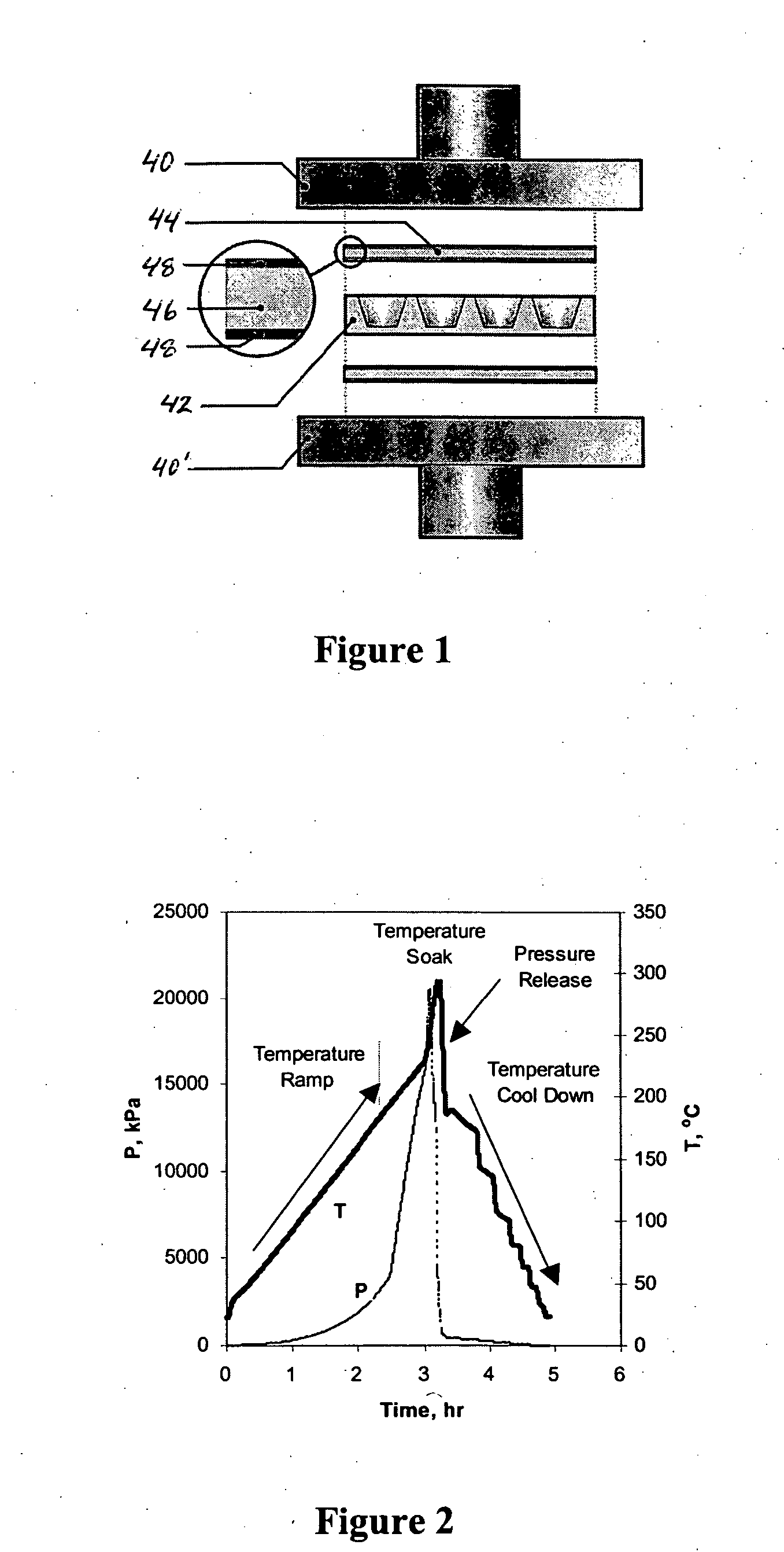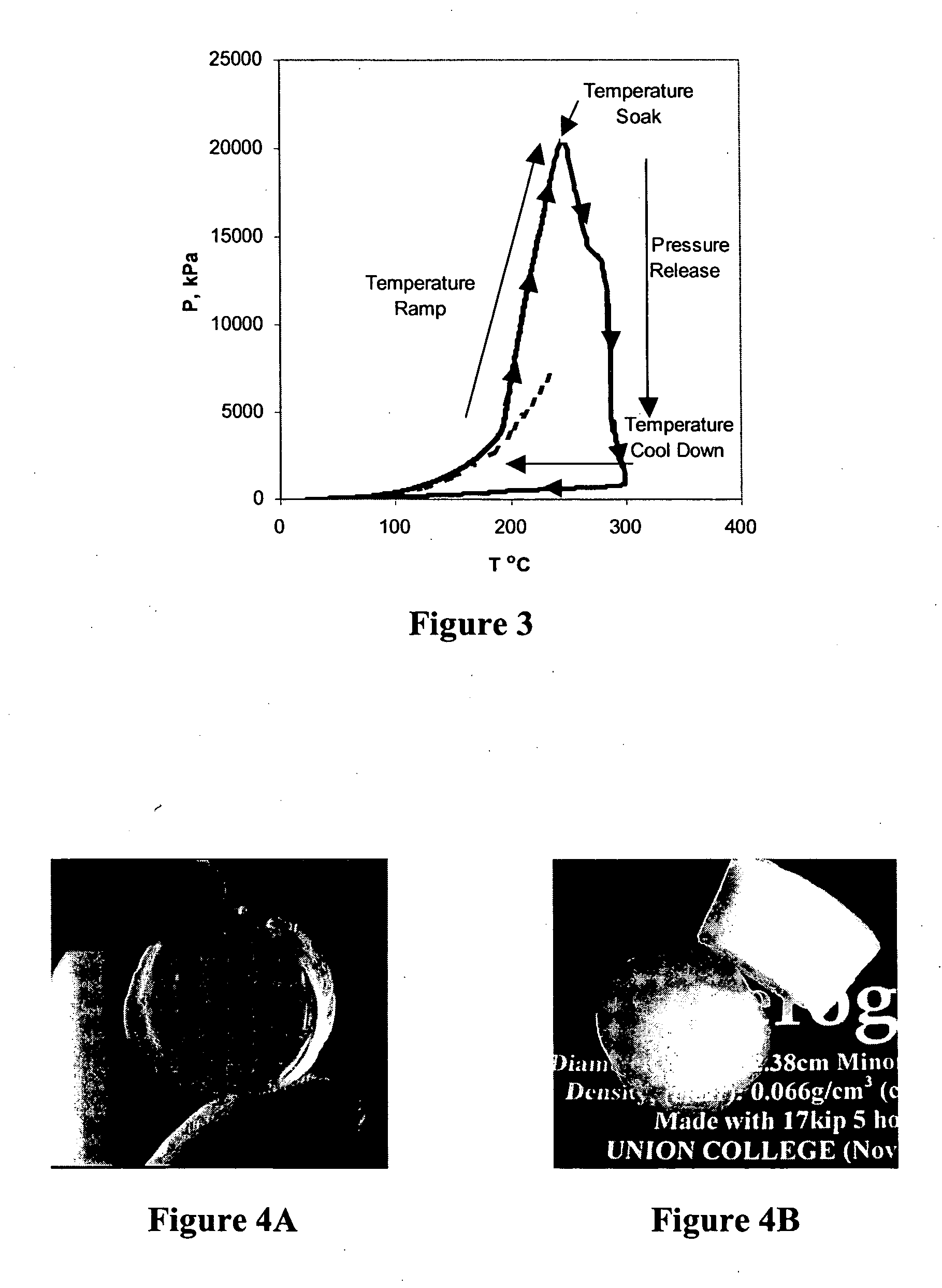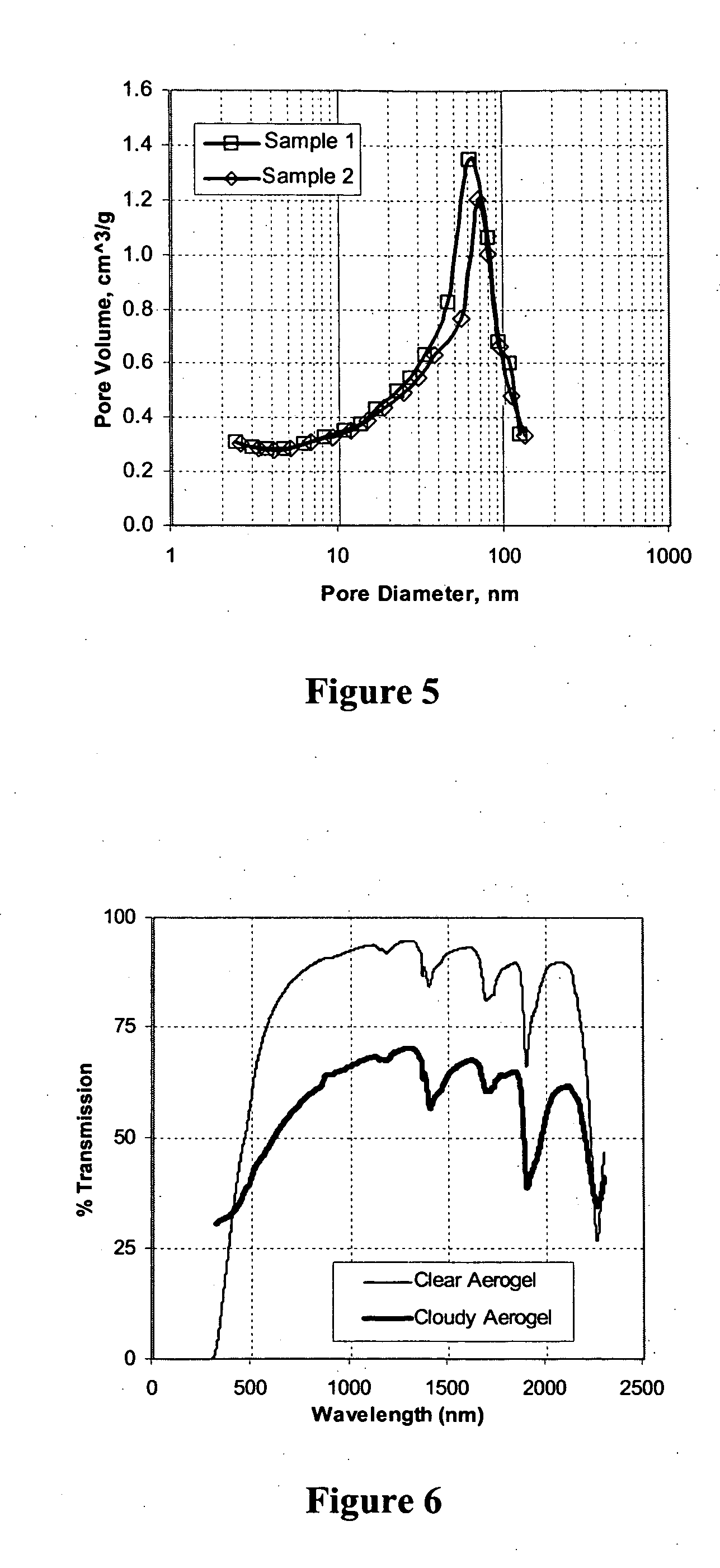Method and device for fabricating aerogels and aerogel monoliths obtained thereby
a technology of aerogels and monoliths, which is applied in the direction of fluorescence/phosphorescence, instruments, silicon compounds, etc., can solve the problems of affecting the development of aerogel materials in commercial applications, affecting the development of aerogel materials, and affecting etc., and achieves the effects of improving the adaptability to large-scale assembly-line fabrication applications, and improving the quality of aerogels
- Summary
- Abstract
- Description
- Claims
- Application Information
AI Technical Summary
Benefits of technology
Problems solved by technology
Method used
Image
Examples
example 1
System for Aerogel Fabrication
[0066] Referring to FIG. 1, equipment used to fabricate the aerogel monoliths by the new fast supercritical extraction technique of the present invention includes a 50-ton hydraulic hot press (having upper and lower press plates 40, 40′), a stainless-steel mold 42, and a high-temperature seal 44 formed of a graphite gasket 46 sandwiched between sheets of Kapton™ film 46. By way of example, the mold 42 is fabricated from a 10×10×2 cm3 thick piece of stainless steel (see FIG. 1). Sixteen 2.2 cm diameter, 1.7 cm-deep holes (with a 7° taper) are spaced uniformly across the plate. The surface was ground flat to ensure a good seal between the gasket and the mold.
example 2
Fabrication of Aerogels
[0067] The system described in Example 1 above was used to prepare aerogels.
[0068] The one-step fabrication process entails two main phases, both of which take place inside of the mold during a continuous process. The first phase is to polymerize silica to form a sol-gel, and the second phase is to safely evacuate the water and alcohol solution. Initially, the chemical precursors for the aerogel were mixed and poured into the mold. For a tetramethoxysilane-derived (TMOS) aerogel, these precursors are TMOS, deionized water, methanol, and ammonium hydroxide with molar ratios TMOS:MeOH:H20:NH4OH of 1.0:12.0:4.0:3.7×10−3.
[0069] The mold is placed in the hydraulic hot press and the processing begins by applying and holding a 75 kN restraining force. Typically, a temperature ramp of 1.25° C.·min−1 is applied to heat the mold from ambient temperature to a supercritical temperature (˜265−300° C.). The internal pressure of the mold increases as a result of the tempe...
example 3
Characterization of Aerogels
[0075] Using the procedure described in Example 2, several monolithic cylindrical aerogel samples were prepared. Sample aerogel monoliths are shown in FIGS. 4A-B.
[0076] Bulk density measurements were made using a caliper and mass balance. Values as low as 0.066 g·cm−3 were measured.
[0077] The aerogel pore-size data were characterized using a Micromeritics ASAP 2010 Nitrogen Adsorption system (Micromeritics Instrument Corporation). Samples were outgassed for 5 hours at 200° C. prior to analysis. A 5-point Brunauer-Emmett-Teller (BET) analysis was used to determine surface area. Mesopore distributions were determined from the desorption branch of the nitrogen isotherm using the Barrett-Joyner-Halenda (BJH) method. The BET surface areas were found to be 320 m2·g−1, and the BJH desorption average pore size was found to be about 15 nm. Incremental pore volume was found to peak at 68 nm. FIG. 5 presents the desorption pore-size distribution. The 320 m2·g−1 s...
PUM
| Property | Measurement | Unit |
|---|---|---|
| dwell temperature | aaaaa | aaaaa |
| force | aaaaa | aaaaa |
| external restraining force | aaaaa | aaaaa |
Abstract
Description
Claims
Application Information
 Login to View More
Login to View More - R&D
- Intellectual Property
- Life Sciences
- Materials
- Tech Scout
- Unparalleled Data Quality
- Higher Quality Content
- 60% Fewer Hallucinations
Browse by: Latest US Patents, China's latest patents, Technical Efficacy Thesaurus, Application Domain, Technology Topic, Popular Technical Reports.
© 2025 PatSnap. All rights reserved.Legal|Privacy policy|Modern Slavery Act Transparency Statement|Sitemap|About US| Contact US: help@patsnap.com



